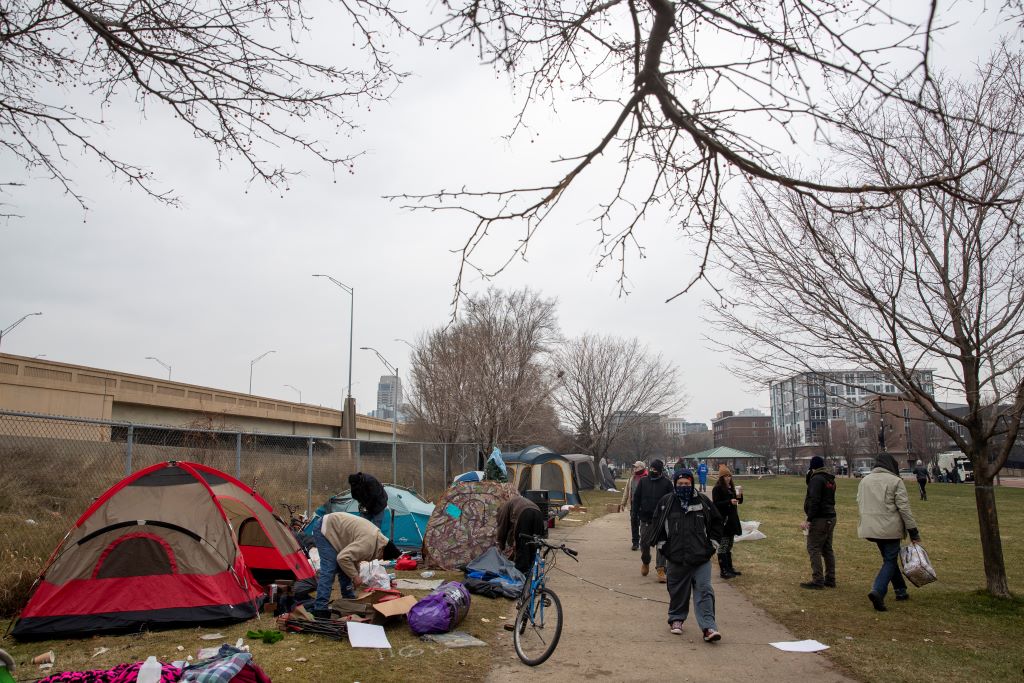The best cities for homeless resources are San Francisco, Seattle, and Los Angeles, offering a wide range of services and support to those in need. These cities have robust shelter systems, food assistance programs, healthcare services, and job training opportunities to address the homelessness crisis.
Additionally, they have strong community support and initiatives that prioritize housing stability and homelessness prevention. With a focus on collaboration and effective resource allocation, these cities strive to provide comprehensive support and assistance to homeless individuals and families. Investing in these cities’ homeless resources is crucial for addressing the complex issues surrounding homelessness and working towards sustainable solutions.
Ultimately, by prioritizing the needs of the homeless population, these cities are making strides in improving the lives of vulnerable individuals and promoting social justice.
Understanding Homeless Resources

When it comes to addressing the issue of homelessness, providing adequate resources is crucial. Homeless resources are the various services and support systems designed to assist individuals facing homelessness. These resources aim to meet the basic needs of homeless individuals such as shelter, food, healthcare, and employment assistance. Websites like Ngcatravel often discuss these challenges and the critical importance of having adequate resources in place. In this section, we will explore the challenges faced by homeless individuals and emphasize how vital these resources are for their support and recovery.
Challenges Faced By Homeless Individuals
Homelessness presents a multitude of challenges that impact individuals daily. From the lack of stable housing to limited access to healthcare, homeless individuals navigate difficult circumstances that require comprehensive solutions. Understanding these challenges helps us appreciate the significance of homeless resources in improving their lives. Let’s examine some of the challenges faced by homeless individuals:
- Unstable housing: Homeless individuals often lack a stable place to call home. They may sleep on the streets, in shelters, or bounce between temporary accommodations.
- Limited access to healthcare: The lack of consistent healthcare can exacerbate existing health conditions and prevent timely treatment of illnesses.
- Food insecurity: Without a stable income, homeless individuals struggle to secure regular meals, leading to food insecurity and malnutrition.
- Employment barriers: Finding employment is challenging for homeless individuals due to a lack of permanent address, limited work experience, and stigma associated with homelessness.
- Mental health issues: Homelessness often correlates with mental health challenges such as depression, anxiety, and substance abuse disorders, which require specialized support.
Importance Of Adequate Resources
Adequate resources are essential in addressing the challenges faced by homeless individuals and helping them regain stability in their lives. These resources play a crucial role in providing immediate assistance and long-term support. Here are some reasons highlighting the importance of having homeless resources available:
- Basic needs met: Homeless resources ensure that individuals have access to essentials like shelter, food, clothing, and personal hygiene products.
- Healthcare access: Comprehensive healthcare services, including mental health support and substance abuse treatment, can address and manage health issues faced by homeless individuals.
- Employment and skills development: Resources that offer job training, resume building, and employment assistance empower homeless individuals to acquire the necessary skills for sustainable employment.
- Supportive services: Various support services, like counseling, case management, and housing assistance, aim to address the underlying causes of homelessness and help individuals transition to stable housing.
- Community integration: Homeless resources facilitate community integration, fostering a sense of belonging and providing opportunities for social engagement among homeless individuals.
Key Factors For Evaluating Homeless Resources
When it comes to evaluating homeless resources in different cities, certain key factors play a vital role in determining their effectiveness. By considering these factors, we can better understand which cities provide the best support and assistance to individuals experiencing homelessness. The top three factors to consider are affordable housing availability, support services, and programs, particularly focusing on cities with the best homeless programs. These programs are essential in providing comprehensive care and support, ensuring that individuals have access not just to shelter, but also to resources that can aid in their transition to stable and independent living.
Affordable Housing Availability
One of the primary factors that determines the quality of homeless resources in a city is the availability of affordable housing. When individuals are faced with homelessness, having access to safe and affordable housing is crucial in helping them rebuild their lives. Cities need to prioritize the development of affordable housing options that cater to the specific needs of the homeless population.
Here are some aspects to consider when evaluating the availability of affordable housing:
- The number of emergency shelters and transitional housing units in the city
- The average cost of housing rentals about the local median income
- The percentage of government-funded housing initiatives
Support Services And Programs
In addition to affordable housing, the availability of support services and programs is essential in addressing the needs of the homeless population. These services aim to provide individuals with the necessary tools and resources to help them regain stability and move toward self-sufficiency. Cities that offer a wide range of support services and programs have a higher chance of effectively addressing the root causes of homelessness.
Here are some support services and programs to consider when evaluating a city’s homeless resources:
- Access to healthcare services, including mental health support
- Employment assistance programs and job training initiatives
- Substance abuse and addiction counseling services
- Education and skill-building programs for homeless youth
- Legal aid services to protect the rights of homeless individuals
- Availability of food banks and meal programs
Cities that prioritize these key factors – affordable housing availability and a robust range of support services and programs – demonstrate a commitment to addressing the needs of their homeless population.
Best Cities For Homeless Resources
Cities play a crucial role in providing vital resources and support to homeless populations. While the issue of homelessness persists, some cities have made significant strides in offering comprehensive resources and initiatives to help those in need. Let’s explore two cities that stand out for their commitment to addressing homelessness.
City 1: Top Features And Initiatives
- Comprehensive shelter network
- Outreach programs for vulnerable populations
- Access to healthcare services
- Support for transitional housing
- Collaboration with nonprofit organizations
The city of New York has made notable strides in providing a wide range of services, such as emergency shelters, health services, and programs aimed at long-term stability for homeless individuals and families.
City 2: Noteworthy Homeless Support
- Emphasis on housing-first approach
- Community-based support networks
- Mental health and substance abuse treatment
- Employment assistance programs
- Efforts to address the affordable housing shortage
San Francisco’s focus on a ‘housing-first’ model and integrated, community-based programs has led to notable progress in supporting the homeless population, with targeted programs addressing the root causes of homelessness.
Community Empowerment Through Collaboration
Community empowerment is an essential aspect of addressing homelessness and providing adequate resources for those in need. Through collaboration between government agencies and nonprofit organizations, cities can make a significant impact on the lives of homeless individuals. By working together, they can create a supportive ecosystem that helps people get back on their feet. This article explores two key factors in community empowerment: government and nonprofit partnerships, and the impact of community involvement.
Government And Non-profit Partnerships
In the fight against homelessness, effective collaboration between the government and nonprofit organizations is crucial. When these entities join forces, they can combine resources, expertise, and funding to maximize the impact of homeless assistance programs. Government agencies often provide financial support and policy frameworks, while nonprofits contribute their on-the-ground knowledge and services. This partnership creates a synergy that facilitates the development and implementation of comprehensive homelessness solutions.
Impact Of Community Involvement
Community involvement plays a pivotal role in tackling homelessness and boosting the effectiveness of resources available to those in need. By engaging community members, cities can foster a sense of ownership and responsibility, inspiring individuals to actively contribute to providing solutions. Community-based initiatives, such as volunteer programs and awareness campaigns, not only offer practical support but also help dispel stigmas surrounding homelessness. This involvement strengthens the social fabric and promotes a more compassionate society.
Future Trends In Homeless Support
The issue of homelessness continues to be prevalent in many cities around the world, and as society progresses, so too does the approach towards supporting those in need. The future of homeless support is promising, with advancements in technology and innovative solutions leading the way.
Technology Integration In Services
The integration of technology in homeless support services is revolutionizing the way assistance is provided to those experiencing homelessness. Through the use of mobile applications, individuals can easily access resources such as shelters, food banks, and healthcare providers. These apps offer real-time information, ensuring that the homeless have up-to-date knowledge of available services in their area.
In addition, virtual reality (VR) is being explored as a means to raise awareness about homelessness. Through immersive experiences, VR helps individuals better understand the challenges faced by those without stable housing, ultimately fostering empathy and compassion.
Innovative Solutions And Approaches

Addressing homelessness requires a multifaceted approach, and innovative solutions are paving the way for effective interventions. One such approach is the use of modular housing units, which are pre-fabricated and can be quickly assembled to provide affordable and temporary shelter. These units offer a sense of stability and security for individuals experiencing homelessness.
Furthermore, community cooperation is being emphasized, with collaboration between government agencies, non-profit organizations, and local businesses. This integrated approach ensures that resources are maximized and tailored to the specific needs of each community.
| Innovative Solutions | Benefits |
| Housing First Initiative | Addresses the root cause of homelessness and focuses on providing stable housing as a first step toward regaining stability. |
| Employment Programs | Offering job training and placement opportunities to help individuals secure employment and regain financial independence. |
| Peer Support Networks | Creating communities of support where individuals with lived experience of homelessness can offer guidance and mentorship. |
- Increased collaboration among organizations
- Improved access to mental health services
- Enhanced social programs targeting prevention and early intervention
- Integrated data systems for more efficient coordination of resources
As a result, these innovative solutions and approaches are working towards reducing homelessness and ensuring a brighter future for those in need.
Frequently Asked Questions For Best Cities For Homeless Resources
What Are The Best Cities For Homeless Resources?
Several cities offer great resources for the homeless. Some of the top choices include San Francisco, Seattle, and Denver. These cities have a wide range of services and programs aimed at helping the homeless population access housing, food, healthcare, and employment opportunities.
What Types Of Resources Are Available For The Homeless?
Homeless individuals can access a variety of resources, including emergency shelters, transitional housing, soup kitchens, and healthcare services. Many cities also offer job training programs, substance abuse counseling, and mental health support for those in need. These resources aim to provide support and assistance in helping the homeless get back on their feet.
How Can Homeless Individuals Find Resources In Their City?
Homeless individuals can find resources in their city by reaching out to local homeless shelters, social service agencies, or nonprofit organizations. These organizations often have staff members who can provide information and assistance in accessing the resources available, such as emergency shelters, food banks, and healthcare services.
Are There Specific Resources Available For Homeless Youth?
Yes, there are specific resources available for homeless youth. Many cities have programs that cater specifically to homeless individuals under the age of 25. These programs typically offer housing assistance, education support, job training, and counseling services to help homeless youth transition into stable and independent living.
Conclusion
In the quest for the best cities for homeless resources, it’s essential to consider vital factors such as shelter availability, access to food and healthcare, and support services. In this blog post, not only will you discover 10 tips for a long and successful career, but you’ll also learn about the cities making commendable efforts to aid the homeless population, proving how access to resources can significantly impact the lives of those in need.






